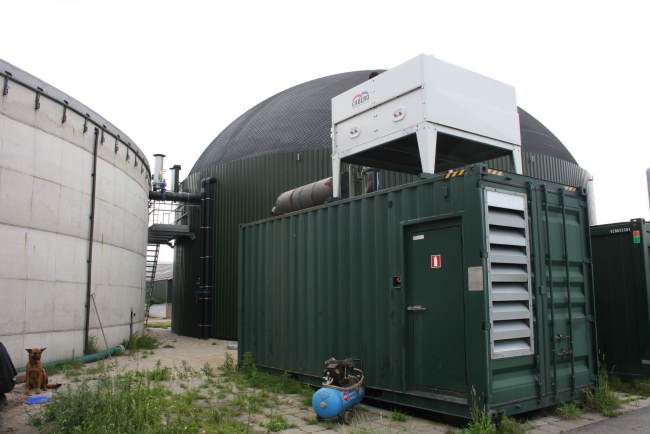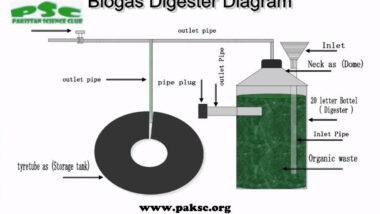Here it is: It’s all the facts that you wanted to know, about Anaerobic Decomposition, but maybe never asked.
Decomposition Without Air Defined Succinctly
The first step is the decomposition (hydrolysis) of plant or animal matter. This step breaks down the organic material to usable-sized molecules such as sugar. The second step is the conversion of decomposed matter to organic acids. Finally, the acids are converted to methane gas. via ca.gov
Anaerobic Decomposition in Landfills

Although it is not an intentional treatment technique for municipal solid waste, the decomposition of organic matter in the low-oxygen environment of landfills naturally produces gas that is about 50 percent methane and 50 percent carbon dioxide. According to the U.S. Environmental Protection Agency, approximately one-fifth of human-caused emissions of methane come from landfills. Landfill gas can be extracted and collected using a series of wells. The gas can be flared directly if heat or electricity is needed on-site. via britannica.com
The Anaerobic Decomposing Process
In an anaerobic decomposing process, the materials are encased in a container, sealed from oxygen. The organisms begin breaking down the materials into sugars to make them accessible to other bacteria. This second group then converts these sugars into carbon dioxide, hydrogen, ammonia, and organic acids. After this, a third wave made up of methanogens convert these gases into methane and carbon dioxide. via buschsystems.com
Anaerobic Decomposition Compared with Pyrolysis
Anaerobic digestion, like pyrolysis, occurs in the absence of air; but in this case, the decomposition is caused by bacterial action rather than high temperatures. It is a biochemical process which takes place in almost any biological material but is favoured by warm, wet and airless conditions. It occurs naturally in decaying vegetation on the bottom of ponds, producing the marsh gas which bubbles to the surface and can catch fire. It also occurs in landfill sites of municipal solid wastes and purpose-built anaerobic digesters of wet wastes. via sciencedirect.com
4 Key Stages of the Decomposition of Biomass

The four key stages of anaerobic digestion/ decomposition involve hydrolysis, acidogenesis, acetogenesis and methanogenesis.
The overall process can be described by the chemical reaction, where organic material such as glucose is biochemically digested into carbon dioxide (CO2) and methane (CH4) by the anaerobic microorganisms.
1. Hydrolysis
In most cases, biomass is made up of large organic polymers. For the bacteria in anaerobic digesters to access the energy potential of the material, these chains must first be broken down into their smaller constituent parts. These constituent parts, or monomers, such as sugars, are readily available to other bacteria. The process of breaking these chains and dissolving the smaller molecules into a solution is called hydrolysis.
Therefore, hydrolysis of these high-molecular-weight polymeric components is the necessary first step in anaerobic digestion. Through hydrolysis, the complex organic molecules are broken down into simple sugars, amino acids, and fatty acids.
Acetate and hydrogen produced in the first stages can be used directly by methanogens.
2. Acidogenesis Described
The biological process of acidogenesis results in the further breakdown of the remaining components by acidogenic (fermentative) bacteria. Here, VFAs are created, along with ammonia, carbon dioxide, and hydrogen sulfide, as well as other byproducts.[20] The process of acidogenesis is similar to the way milk sours.
3. Acetogenesis
The third stage of anaerobic digestion is acetogenesis.
4. Methanogenesis
The final stage of anaerobic digestion is the biological process of methanogenesis. Here, methanogens use the intermediate products of the preceding stages and convert them into methane, carbon dioxide, and water. These components make up the majority of the biogas emitted from the system. Methanogenesis is sensitive to both high and low pHs and occurs between pH 6.5 and pH 8. The remaining, indigestible material the microbes cannot use and any dead bacterial remains constitute the digestate.
Different Configuration Changes
Anaerobic digesters can be designed and engineered to operate using a number of different configurations and can be categorized into batch vs. continuous process mode, mesophilic vs. thermophilic temperature conditions, high vs. low portion of solids, and single-stage vs. multistage processes. Above this level is considered high solids content and can also be known as dry digestion. In a single-stage process, one reactor houses the four anaerobic digestion steps.
Batch Processor a Continuous Process?
Anaerobic digestion can be performed as a batch process or a continuous process. In a batch system, biomass is added to the reactor at the start of the process. The reactor is then sealed for the duration of the process. In its simplest form, batch-processing needs inoculation with already processed material to start the anaerobic digestion.
Biogas Production
In a typical scenario, biogas production will be formed with a normal distribution pattern over time. Operators can use this fact to determine when they believe the process of digestion of the organic matter has been completed. There can be severe odour issues if a batch reactor is opened and emptied before the process is well completed. A more advanced type of batch approach has limited the odour issues by integrating anaerobic digestion with in-vessel composting. In this approach, inoculation takes place through the use of recirculated degasified percolate. via wikipedia.org
Decomposition of Organic Matter by Bacteria in Liquid Manure Systems
Anaerobic digestion, or the decomposition of organic matter by bacteria in the absence of oxygen, occurs naturally in liquid manure systems. The lack of oxygen and abundance of organic matter in liquid manure provides the proper conditions for anaerobic bacteria to survive. Unfortunately, uncontrolled anaerobic decomposition can cause foul odours sometimes associated with liquid manure storage and spreading. However, controlled anaerobic decomposition not only can reduce the odours in liquid manure systems but also can turn odorous compounds and organic matter into energy.
The effluent remaining after controlled anaerobic decomposition, equal in volume to the influent material, is liquefied, low in odour, and rich in nutrients. This digested material is biologically stable and will resist further breakdown and odour production when stored under normal conditions. via psu.edu



